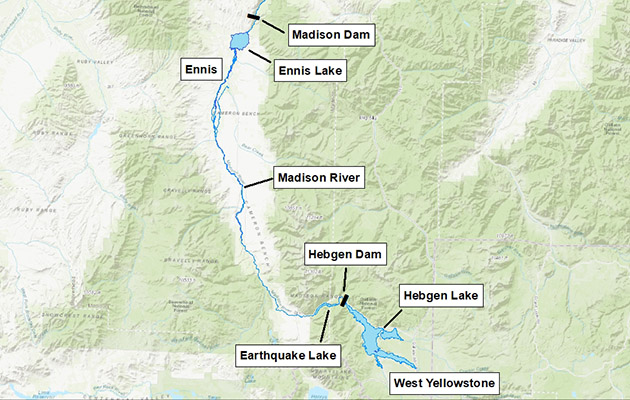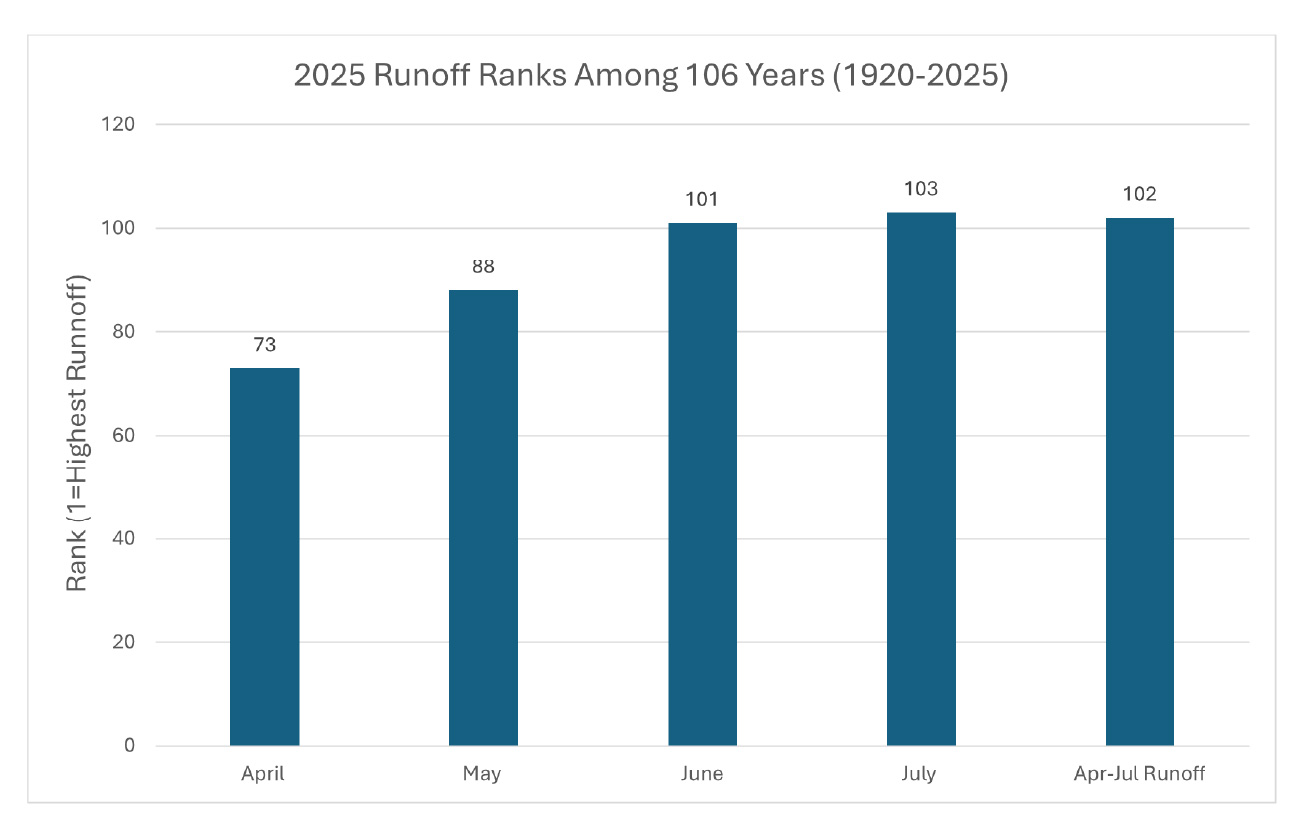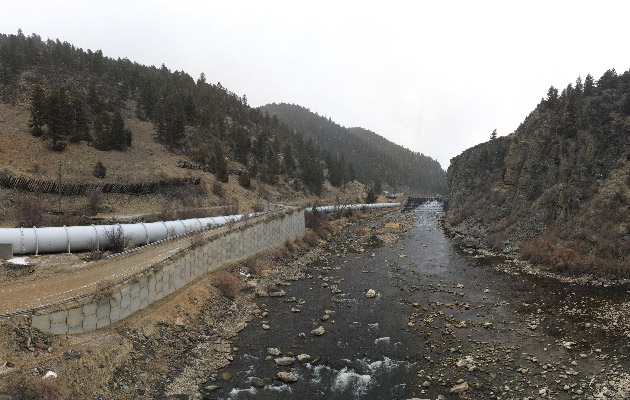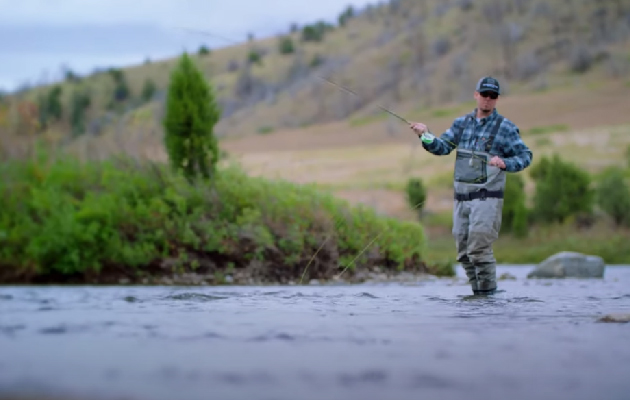
Madison River Drought Management
Our operations on the Madison River

Our operations on the Madison River
Hebgen is a storage reservoir and provides many benefits, including recreation and fish habitat. It also supports irrigation and electric generation downstream.
Hebgen Dam does not produce energy. We use Hebgen Dam to manage flows downstream for the Madison River fishery and Ennis Lake elevations.
Ennis Lake elevations are controlled by Madison Dam, which produces power. Madison Dam was recently upgraded a 12-megawatt facility, up from 8 megawatts.
Low runoff is making for challenging water year in 2025

The April–July 2025 runoff season ended up being one of the lowest on record. In anticipation, NorthWestern Energy reduced outflows on Oct. 1, 2024, to preserve storage in Hebgen Lake while still meeting FERC requirements at Ennis Lake and below Madison Dam. These flow levels were not reduced further during the winter in order to protect brown trout redds. This graph shows that the 2025 runoff year ranked as the 102nd lowest out of 105 years on record.
Hebgen Lake
.jpg 1x)
Hebgen Lake
Hebgen Lake entered the runoff season approximately 1.21 feet above the 20-year average. Recognizing the below-normal runoff outlook, NorthWestern adjusted forecasts and minimized outflows to maximize lake storage. The lake ultimately came within 0.6 feet of full pool (6534.87 ft) and just 0.4 feet below the 20-year average maximum elevation. While there is no requirement to fill the lake to full pool, NorthWestern must maintain the recreational lake elevation of 6530.26 ft through Oct. 1.
Maintaining higher lake levels is critical not only for summer recreation but also for supporting inflows to Ennis Lake during pulse flow events. In dry years like this, managing Hebgen Lake becomes particularly difficult due to low inflows. NorthWestern continues to work hard to meet all FERC obligations and has requested a temporary modification to its FERC license to help conserve water.
Hebgen Reservoir Conditions

NorthWestern is doing everything possible to reduce outflows from Hebgen in order to maintain the recreational elevation of 6530.26 ft. However, with these record-low inflows, it’s becoming very difficult. Currently, we are about 2 feet above the recreational elevation, but levels are dropping faster than we’d like. If there are opportunities to further reduce outflows from Hebgen in the coming months, we will take them — but we also must consider other FERC requirements downstream of the dam.
Managing water temperatures to protect the fishery

Managing water temperatures to protect the fishery
In the summer, we provide pulse flows out of Hebgen Lake into the Madison River below Ennis Lake. Our pulse flow program is designed to maintain lower Madison River temperatures at or below 80 degrees in order to prevent fish mortality caused from elevated water temperatures.
The Madison Thermal Decision Support System (DSS) was developed to protect fisheries and other river resources.
How drought conditions impact our operations:
- Forecasts and modeling are closely followed by NorthWestern Energy to manage releases to the Madison River downstream and to capture and fill Hebgen Reservoir in the spring.
- Limited snowpack and spring precipitation create challenging conditions to fully fill Hebgen reservoir while providing required flows to the Madison River.
- Water releases from Hebgen reservoir feed Ennis Reservoir to support pulsed flow releases out of Madison Dam.
- The pulse flows are calculated using a model that helps determine the volume of water to be released, allowing for the conservation of water while maintaining safe water temperatures in the lower Madison River.
- Low flows directly affect the amount of electricity generated at Madison Dam.
- NorthWestern Energy’s stewardship responsibilities of the river resources include balancing the many interests of multiple stakeholders.
- The cooperation and flexibility of all help to protect and maintain the long-term health of the river system, which is our priority.


